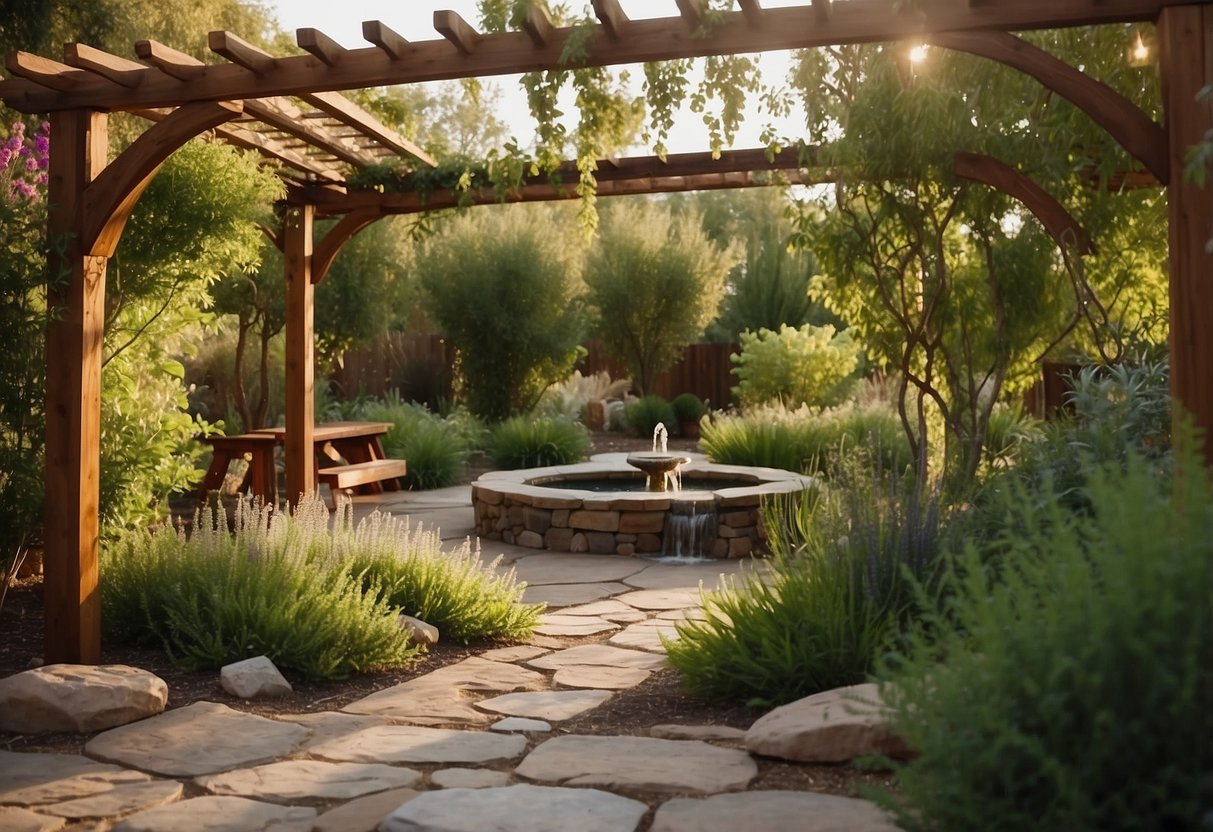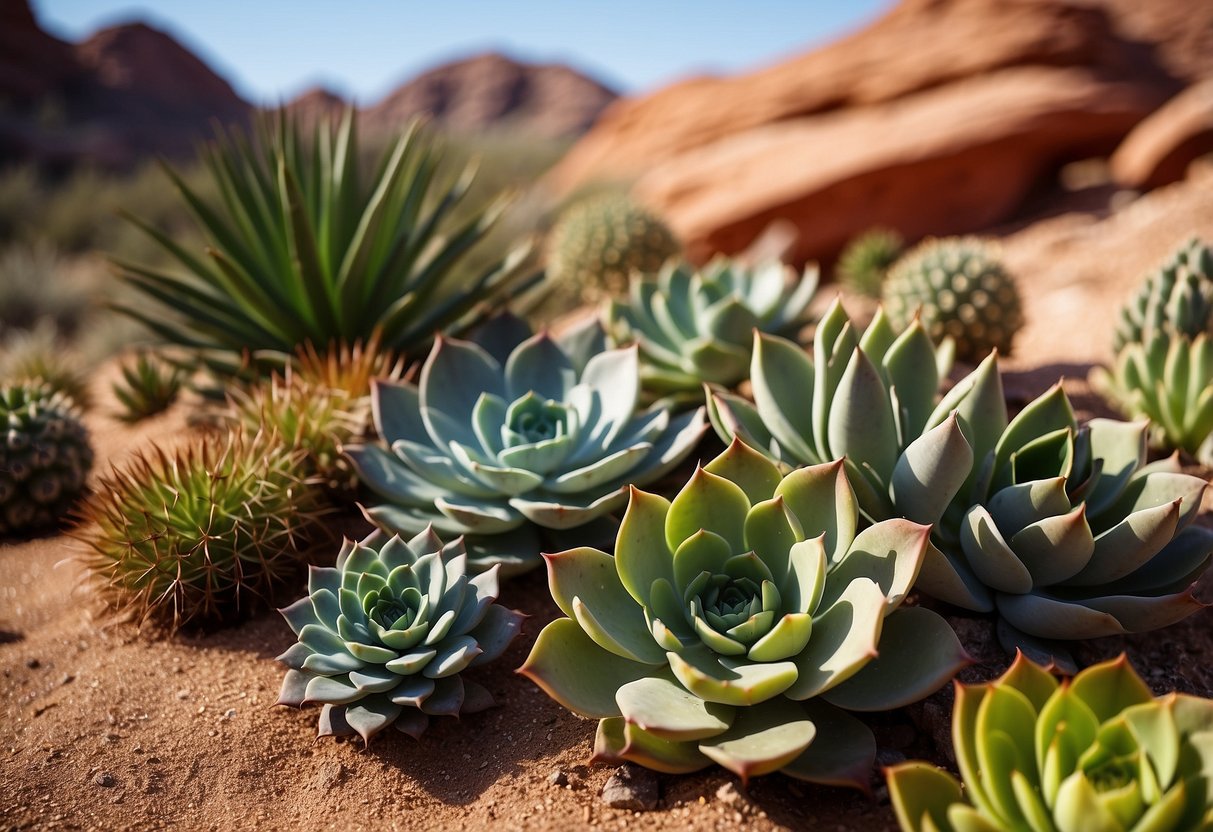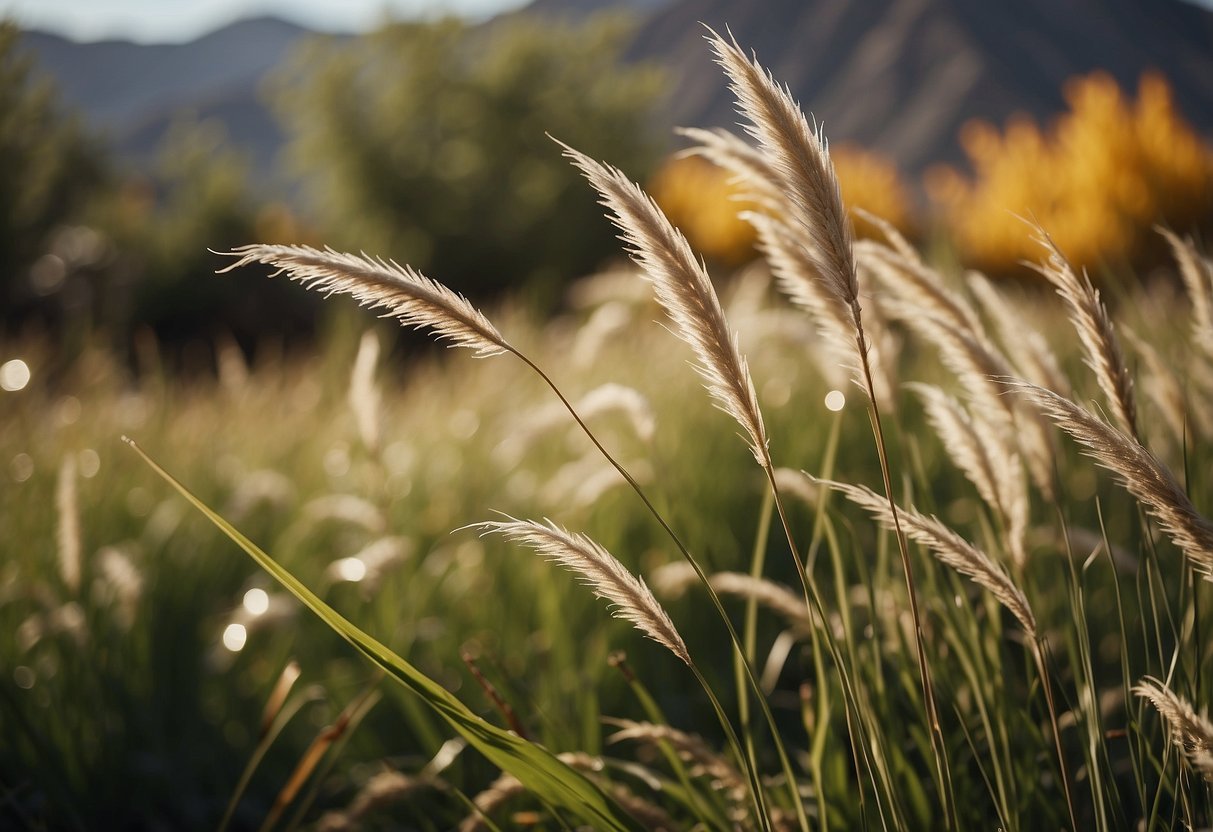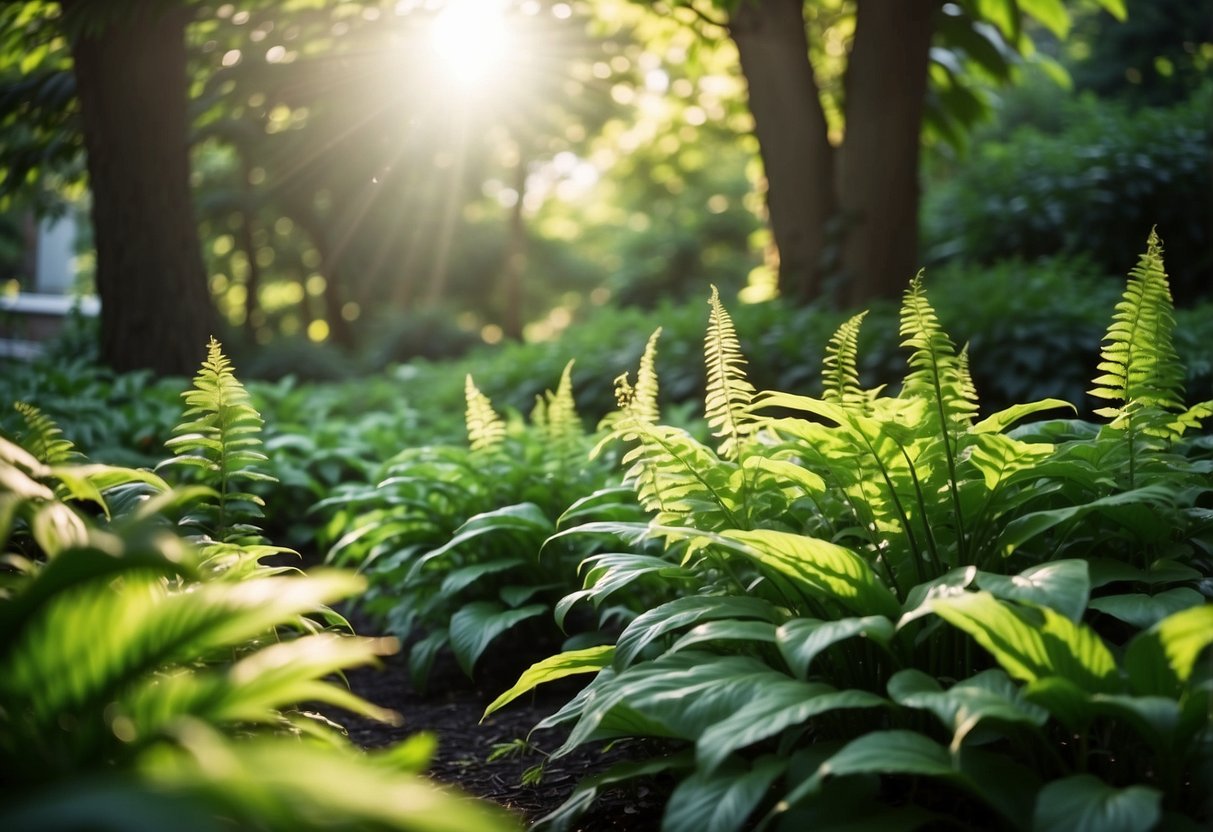Utah Garden Ideas: Transform Your Backyard Oasis
Gardening in Utah can be a rewarding experience, thanks to the state’s varied climate and geography. From arid deserts to alpine regions, your Utah garden can feature a diverse array of plants that thrive in different conditions.

How can you make the most of your Utah garden? By choosing the right plants and design ideas, you can create a beautiful, low-maintenance landscape. Whether you live in Salt Lake City or St. George, this article will guide you through some inspiring garden ideas specific to your region.
1) Native Plants Corner

Creating a Native Plants Corner in your Utah garden is a great idea. Native plants are well-suited to Utah’s climate and require less water and maintenance.
Consider adding low water and drought-tolerant plants like the Ashy Cranesbill, known for its purple and magenta flowers.
Mix in other native plants that match your garden’s light exposure, soil type, and moisture levels.
2) Water-Wise Landscaping

Water-wise landscaping can save you a lot of water and money. You don’t need to change your landscape design to achieve this.
Use water-wise plants like the Desert Globemallow. They need less water and thrive in Utah’s climate.
Consider adding hardscapes such as mulch or rocks. These reduce water evaporation and help plants retain moisture.
Check out water-wise ground covers. They’re great for covering soil and reducing the need for thirsty turf grass.
3) Utah Prairie Garden

Creating a prairie garden in Utah can be both beautiful and beneficial. Focus on native grasses and flowers. They are well-suited to Utah’s climate and require less water.
Include features like bird baths and pathways. These elements enhance the space for both you and local wildlife. Regular weeding is key to maintaining a healthy ecosystem.
Use plants such as the purple coneflower and little bluestem. They thrive in Utah’s environment and add vibrant colors to your garden. Find more ideas here.
4) Drought-Tolerant Plants

Living in Utah means dealing with dry conditions, but that doesn’t mean your garden has to suffer. There are plenty of beautiful plants that thrive with minimal water.
Consider Desert Globemallow, a native plant with striking orange flowers that attract bees and butterflies.
For a bit of color, Agastache is a great option. This plant, also known as hummingbird mint, features colorful blooms that attract hummingbirds.
For ground cover, the resilient Cotoneaster dammeri ‘Coral Beauty’ offers both beauty and durability.
5) Utah Vegetable Patch

Creating a vegetable patch in your Utah backyard can be rewarding. Start by choosing vegetables that grow well in Utah’s climate. Some good choices include radishes, which need space to grow well, and eggplants, which you can plant in late spring.
Remember to check the frost-free period in your area to avoid planting too early or too late. By following these tips, you’ll have a thriving vegetable patch full of fresh produce.
6) Rock Garden Highlights

Using rocks in your Utah garden adds structure and beauty. Large stones or boulders can serve as focal points. Smaller rocks create lovely borders for flower beds.
Rock gardens also support various plants. Try adding perennials and ornamental grasses for some height. Groundcovers like creeping thyme help soften the look of hard rocks.
Consider adding bulbs such as alliums or wild tulips for a burst of color. Pathways made of crushed gravel or stepping stones make your garden more accessible and visually appealing.
7) Herb Spiral Design

An herb spiral is a fun and efficient way to grow herbs in your Utah garden. It uses a spiral shape to create different growing conditions in a small space. This means you can grow herbs that need different types of soil and sunlight all in one place.
Start by choosing a sunny spot in your garden. Use stones or bricks to build the spiral, making it taller in the middle and lower at the edges. This design helps with drainage and makes harvesting easy.
Plant herbs that love the sun, like rosemary, at the top. Place those that prefer more moisture, like mint, at the bottom. This setup makes the most of your garden’s vertical and horizontal space, providing diverse growing conditions even in a limited area. Check out this detailed guide on making a spiral herb garden.
8) Desert Succulent Garden

Creating a desert succulent garden in Utah is a great idea for a low-maintenance and visually striking garden. Succulents store water in their leaves, making them perfect for dry climates.
Aloe Vera, known for its soothing properties, is a popular choice. It thrives in full sun and requires minimal water.
Consider adding Golden Barrel Cactus. Its round shape and yellow spines add a fun touch. Learn more at Desert Plants for Landscaping.
9) Ornamental Grasses

Ornamental grasses can add beauty and texture to your Utah garden. They thrive in Utah’s arid climate and require minimal water. This makes them a smart choice for water-wise gardening.
Soft, mounding grasses like fountaingrass create a gentle look. Upright grasses, such as switchgrass, offer striking visual contrast.
Some drought-tolerant options include Little Bluestem Grass and Feather Reed Grass. These varieties can handle Utah’s hot summers and cold winters while adding color and style to your landscape.
10) Shade-Loving Plants

Your Utah garden can thrive with the right shade-loving plants. Hostas are a wonderful choice, coming in many sizes and colors, perfect for shady spots. Ferns, like the maidenhair fern and ostrich fern, also do well in shade. For a striking look, try Lady’s Mantle, which offers lime green leaves and chartreuse flowers in June.
Planting these shade-lovers adds variety to your garden and creates a lush, inviting space even in low light areas.
Utah’s Unique Climate and Its Impact on Gardening

Utah’s climate presents unique challenges and opportunities for gardeners. Understanding the state’s hardiness zones and seasonal weather patterns can help you choose the right plants and gardening practices.
Understanding Utah’s Hardiness Zones
Utah is divided into several hardiness zones, primarily Sunset Climate Zones 1, 2, 3, and 10. These zones help gardeners know which plants will thrive in their area.
Zone 1 includes high mountains with cold winters and short growing seasons. You’ll need to pick cold-hardy plants like evergreens and alpine flowers.
Zone 2 covers most of Utah’s low desert areas. This zone has harsh conditions with hot summers and mild winters. Plants that tolerate dry soil, like succulents and cacti, are ideal here.
Zone 3 is found in the northern parts and supports a range of plants, including fruits and vegetables, because of its moderate climate.
Zone 10 occurs in the warmer microclimates in southern Utah. Here, you can grow a variety of subtropical plants, such as citrus trees and certain palms.
Seasonal Weather Patterns
Utah’s weather varies greatly with the seasons. Spring can be unpredictable with sudden frosts, so it’s important to protect young plants with covers or cloches.
In summer, temperatures can soar, especially in the southern regions. Watering your garden in the early morning or late evening helps conserve water and reduce evaporation. Mulching is also effective to maintain soil moisture.
Fall brings cooler temperatures and is a good time for planting perennials and bulbs, as the soil is still warm but the air is cooler.
Winter can be harsh, especially in the northern parts. Using raised beds can help prevent waterlogging, and covering plants with mulch or burlap can protect them from frost.
Understanding these patterns helps in planning your garden year-round and making the most of Utah’s unique climate.
Tips for Successful Gardening in Utah

Gardening in Utah comes with its own set of challenges due to its varied climate and soil conditions. By focusing on proper soil preparation and selecting suitable plants, you can create a thriving garden in any part of the state.
Soil Preparation and Enhancements
Utah’s diverse climates mean soil conditions can vary widely. You’ll often deal with either very sandy soil or heavy clay. Start by testing your soil to understand its composition. Adding organic compost can greatly improve soil health. Compost enriches the nutrient content and helps with water retention.
Tilling is vital to mix compost well into the soil. Aim for a depth of six to eight inches to ensure roots can anchor deeply and access more water. Using a garden tiller can make this easier. Also, consider using organic fertilizers to boost soil fertility.
For water conservation, consider implementing mulching. Mulch helps retain moisture and keeps the soil temperature steady. It can also prevent weed growth, giving your plants a better chance to thrive.
Choosing the Right Plants
Selecting the right plants is key to dealing with Utah’s varied climate. Opt for native plants as they are already adapted to local conditions and generally require less maintenance. Examples include the Ashy Cranesbill, which thrives in full sunlight and requires minimal water.
Understand the specific climate zone of your area. Utah’s climates range from high-altitude, cold regions to lowland deserts. Plants like drought-resistant perennials or those tolerant to both heat and cold can be excellent choices. You can find more about suitable plants in gardening resources.
Additionally, pay attention to the light exposure in your garden. Some plants need full sunlight, while others do better in partial shade. Matching the plant’s needs with your garden’s light conditions will significantly boost your gardening success.







